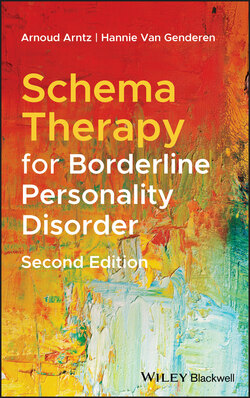Читать книгу Schema Therapy for Borderline Personality Disorder - Hannie van Genderen - Страница 17
Rationale of Treatment/Theories Supporting Treatment
ОглавлениеST as described by Young states that everyone develops schemas during childhood. A schema is an organized knowledge structure, which develops during childhood and manifests in certain behaviors, feelings, and thoughts (Arntz, 2018; Arntz & Lobbestael, 2018). While a schema is not directly measurable, it can be gauged by analyzing the patient's life history and observing the manner in which she deals with her temperament and talents. This becomes more evident and observable as the patient shares more details about her behavior in various social situations and the life rules and strategies to which she adheres.
Healthy schemas develop when the basic needs of a child are met. This enables children to develop positive images about other individuals, themselves, and the world as a whole.
The basic needs of children include:
Safety – Children must be able to depend on a reliable adult for care and a safe place to live, develop, and grow.
Connection to others – Children must feel that they are connected to others and are able to share their experiences, thoughts, and feelings with others.
Autonomy – Children must have a safe and secure environment from where they can explore and learn about the world. The ultimate goal of maturing to adulthood is for them to eventually stand on their own two feet. Caregivers must slowly but surely allow children to separate from them in order to grow into autonomous adults.
Self‐appreciation – Children must have an adequate sense of appreciation. In order to develop a strong sense of self‐esteem, they must be appreciated for who they are as people and what they are capable of doing.
Self‐expression – The expression of one's opinions and feelings must be learned and stimulated without being held back by strict or oppressive rules.
Realistic limits – In order to live in a society with others, it is necessary for children to learn certain rules. They must understand when to subdue their autonomy or self‐expression when dealing with others and be capable of doing so. Children also have to learn to tolerate and adequately deal with frustrations (Young & Klosko, 1994; Young et al., 2003).
When these needs are not met, whether solely due to shortcomings in the child's environment, or in combination with traumatic events (such as emotional, physical, or sexual abuse, or being bullied), this can form—in interaction with the temperament of the child—dysfunctional schemas and coping strategies (see Figure 2.1). The dysfunctional schemas that are formed during childhood development are called “early maladaptive schemas.” Given the circumstances in which the child grew up, they are usually understandable (e.g., a child growing up in an environment where there is a lot of threat of abandonment has an increased risk to develop an abandonment schema). Young describes 18 different early maladaptive schemas (see Appendix I) and three groups of coping strategies (see Appendix J) (Young et al., 2003).
The schemas and coping styles form a sort of alternative for the personality disorder diagnostic system in the DSM‐5 (American Psychiatric Association [APA], 2013). For BPD, so many schemas have been found that a treatment based solely on a schema conceptualization would be very complex. Moreover, the 18 schemas and three coping styles lead to 54 possible combinations, further complicating the task to understand the patient's problems with this model.
Figure 2.1 The development of dysfunctional schemas
